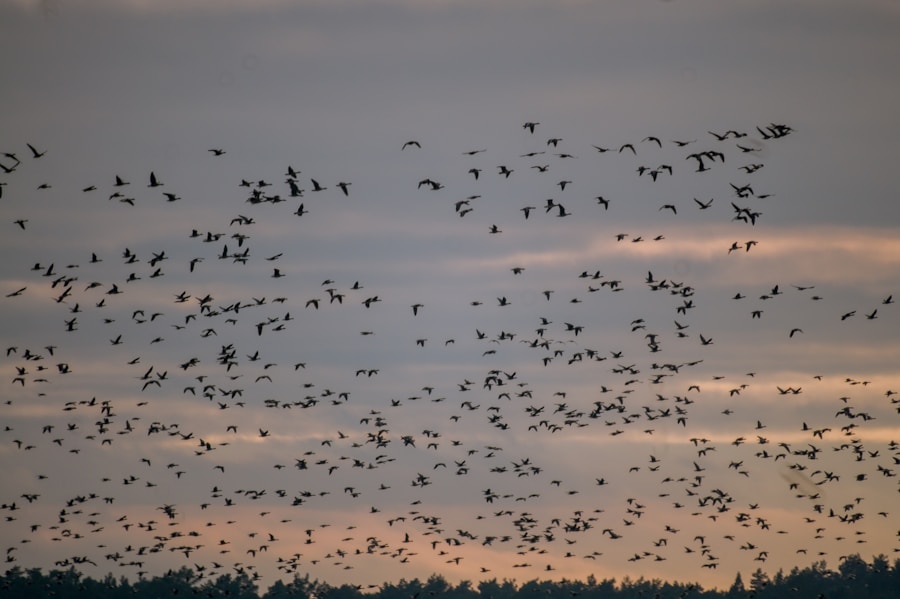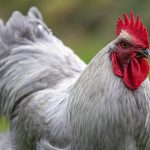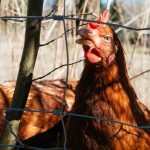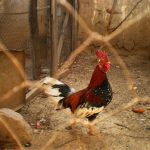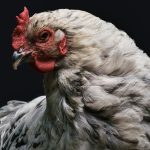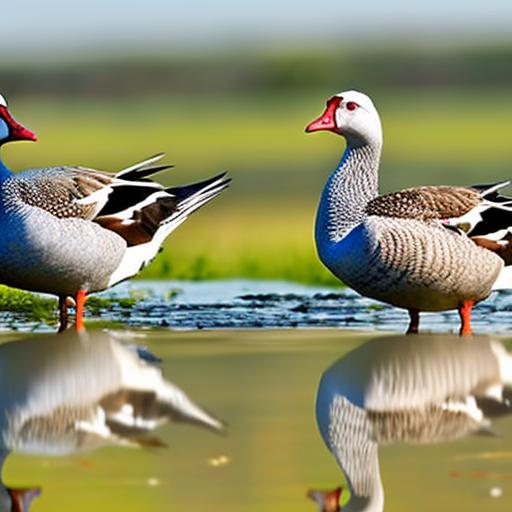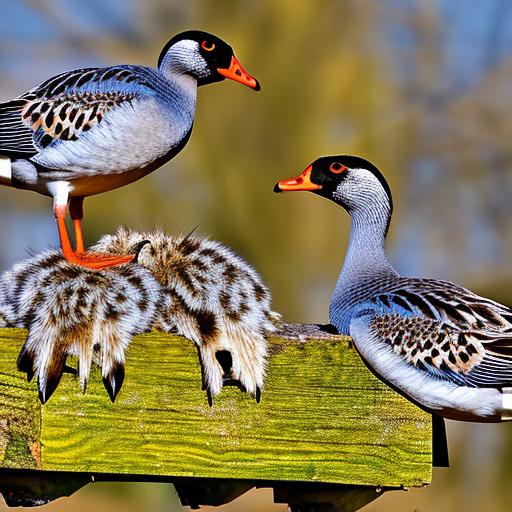Keeping chickens and ducks together can be a rewarding experience for poultry enthusiasts. Both chickens and ducks have their own unique characteristics and benefits, and when kept together, they can create a harmonious and diverse flock. Chickens are known for their egg-laying abilities and pest control, while ducks are excellent foragers and can help keep the area free of insects and snails. By understanding the differences between these two species and creating the ideal living environment, providing proper nutrition, and managing social dynamics, it is possible to successfully integrate chickens and ducks into one flock.
Table of Contents
- 1 Understanding the Differences Between Chickens and Ducks
- 2 Creating the Ideal Living Environment for Chickens and Ducks
- 3 Feeding and Nutrition for Chickens and Ducks
- 4 Health and Wellness Considerations for Chickens and Ducks
- 5 Managing Social Dynamics Between Chickens and Ducks
- 6 Tips for Successful Integration of Chickens and Ducks
Understanding the Differences Between Chickens and Ducks
Chickens and ducks have different physical and behavioral characteristics that should be taken into consideration when keeping them together. Chickens are ground-dwelling birds with strong legs and feet, while ducks have webbed feet and are more adapted to swimming. Chickens are known for scratching and pecking at the ground, while ducks are more inclined to forage in water. Additionally, chickens are more territorial and can be aggressive towards new additions to the flock, while ducks are generally more social and less aggressive. Understanding these differences is crucial for creating a harmonious living environment for both species.
On a behavioral level, chickens and ducks also have different communication styles. Chickens are known for their clucking and crowing, while ducks communicate through quacking and whistling. These differences in communication can sometimes lead to misunderstandings between the two species, so it is important to observe their interactions and intervene if necessary. By understanding these differences, poultry enthusiasts can better cater to the needs of both chickens and ducks in a mixed flock.
Creating the Ideal Living Environment for Chickens and Ducks
Creating the ideal living environment for chickens and ducks involves providing adequate space, shelter, and access to water. Both chickens and ducks require a secure coop or shelter to protect them from predators and the elements. The coop should have separate nesting areas for chickens and ducks, as well as perches for chickens to roost on. Additionally, ducks will need access to a pond or shallow water source for swimming and foraging.
When it comes to outdoor space, both chickens and ducks require ample room to roam and forage. Providing a large fenced-in area with plenty of vegetation and hiding spots will allow both species to exhibit natural behaviors and reduce the likelihood of aggression. It is important to provide separate feeding and watering stations for chickens and ducks to prevent competition and ensure that each species has access to their specific dietary needs.
In terms of bedding, chickens prefer dry, straw-based bedding, while ducks require a more water-resistant material such as wood shavings or straw mixed with diatomaceous earth. By providing the appropriate living environment for both chickens and ducks, poultry enthusiasts can ensure the health and well-being of their mixed flock.
Feeding and Nutrition for Chickens and Ducks
Feeding and nutrition are crucial aspects of keeping chickens and ducks together. While both species can consume a similar diet, there are some differences that should be taken into consideration. Chickens are omnivores and require a diet high in protein to support egg production, while ducks are more inclined towards a diet high in greens and insects. It is important to provide a balanced diet that meets the specific nutritional needs of both chickens and ducks.
When it comes to feeding, it is best to provide separate feeding stations for chickens and ducks to prevent competition and ensure that each species receives the appropriate amount of food. Additionally, it is important to monitor the feeding habits of both species to ensure that they are consuming an adequate amount of nutrients. Supplementing their diet with calcium for egg-laying hens and niacin for ducklings is also important to support their overall health.
In addition to a balanced diet, access to clean water is essential for both chickens and ducks. Ducks require access to water for swimming, foraging, and cleaning their bills, while chickens need water for drinking and bathing. Providing separate water sources for chickens and ducks will ensure that each species has access to clean water at all times. By understanding the specific feeding and nutritional needs of both chickens and ducks, poultry enthusiasts can ensure the health and productivity of their mixed flock.
Health and Wellness Considerations for Chickens and Ducks
Maintaining the health and wellness of chickens and ducks in a mixed flock requires regular monitoring, preventative care, and prompt intervention when necessary. Both species are susceptible to various diseases, parasites, and injuries that can impact their overall well-being. It is important to observe the behavior, appearance, and droppings of both chickens and ducks on a daily basis to detect any signs of illness or distress.
Regular veterinary check-ups, vaccinations, and parasite control are essential for preventing disease outbreaks in a mixed flock. Additionally, providing a clean living environment with proper ventilation, bedding, and access to fresh water will help reduce the likelihood of respiratory infections and other health issues. It is also important to quarantine new additions to the flock before introducing them to prevent the spread of diseases.
In terms of wellness considerations, both chickens and ducks require regular grooming, such as nail trimming, feather clipping, and bill maintenance. Additionally, providing opportunities for dust bathing for chickens and swimming for ducks will help keep them clean and free of parasites. By prioritizing the health and wellness of both chickens and ducks in a mixed flock, poultry enthusiasts can ensure that their flock remains productive and content.
Managing social dynamics between chickens and ducks in a mixed flock requires careful observation, intervention when necessary, and providing opportunities for positive interactions. Chickens are known for their pecking order hierarchy, while ducks are generally more social and less aggressive. It is important to observe the interactions between individual birds within the flock to detect any signs of aggression or bullying.
Introducing new birds to the flock should be done gradually to allow them to establish their place within the social hierarchy without causing undue stress or conflict. Providing multiple feeding stations, perches, nesting areas, and hiding spots will help reduce competition between chickens and ducks. Additionally, providing ample space for both species to roam freely will help reduce the likelihood of aggression.
In some cases, intervention may be necessary to prevent bullying or aggression between individual birds. Separating aggressive birds from the flock temporarily or providing distractions such as treats or toys can help diffuse tense situations. By managing social dynamics between chickens and ducks in a mixed flock, poultry enthusiasts can create a harmonious living environment where both species can coexist peacefully.
Tips for Successful Integration of Chickens and Ducks
Successfully integrating chickens and ducks into one flock requires careful planning, observation, patience, and intervention when necessary. When introducing new birds to the flock, it is important to do so gradually to allow them to establish their place within the social hierarchy without causing undue stress or conflict. Providing multiple feeding stations, perches, nesting areas, hiding spots, and access to water will help reduce competition between chickens and ducks.
It is also important to monitor the interactions between individual birds within the flock on a daily basis to detect any signs of aggression or bullying. Intervening when necessary by separating aggressive birds from the flock temporarily or providing distractions such as treats or toys can help diffuse tense situations. Additionally, providing ample space for both species to roam freely will help reduce the likelihood of aggression.
In conclusion, keeping chickens and ducks together can be a rewarding experience for poultry enthusiasts when done thoughtfully. By understanding the differences between these two species, creating the ideal living environment, providing proper nutrition, prioritizing health and wellness considerations, managing social dynamics, and following tips for successful integration, it is possible to create a harmonious mixed flock where both chickens and ducks can coexist peacefully. With careful planning, observation, patience, and intervention when necessary, poultry enthusiasts can enjoy the benefits of keeping chickens and ducks together in one flock.
Meet Walter, the feathered-friend fanatic of Florida! Nestled in the sunshine state, Walter struts through life with his feathered companions, clucking his way to happiness. With a coop that’s fancier than a five-star hotel, he’s the Don Juan of the chicken world. When he’s not teaching his hens to do the cha-cha, you’ll find him in a heated debate with his prized rooster, Sir Clucks-a-Lot. Walter’s poultry passion is no yolk; he’s the sunny-side-up guy you never knew you needed in your flock of friends!

